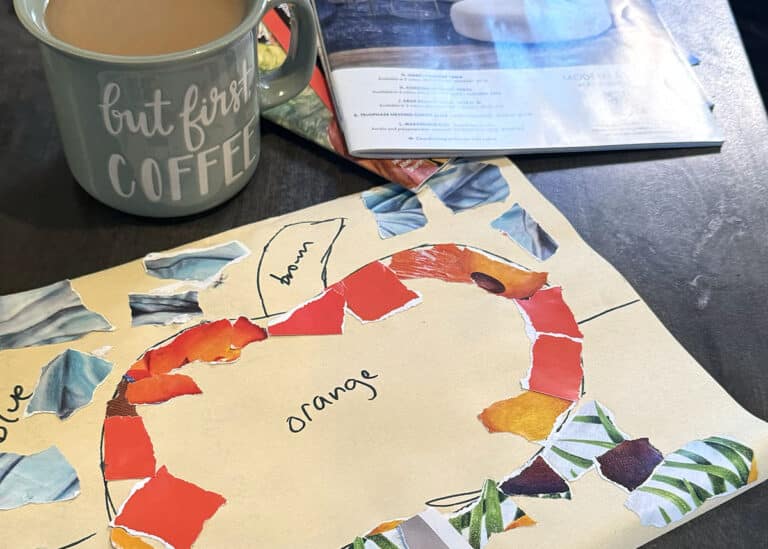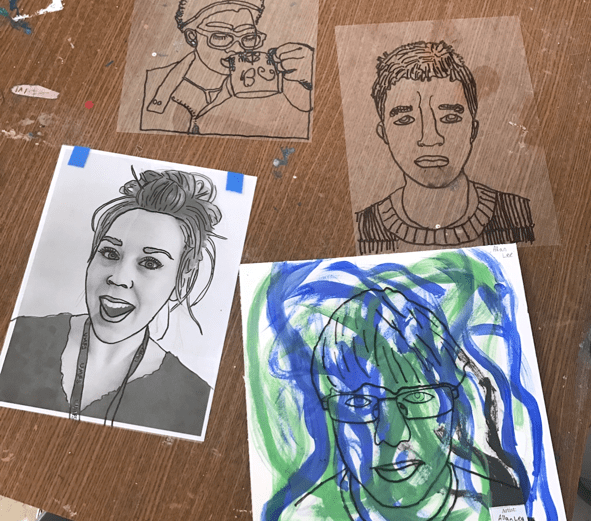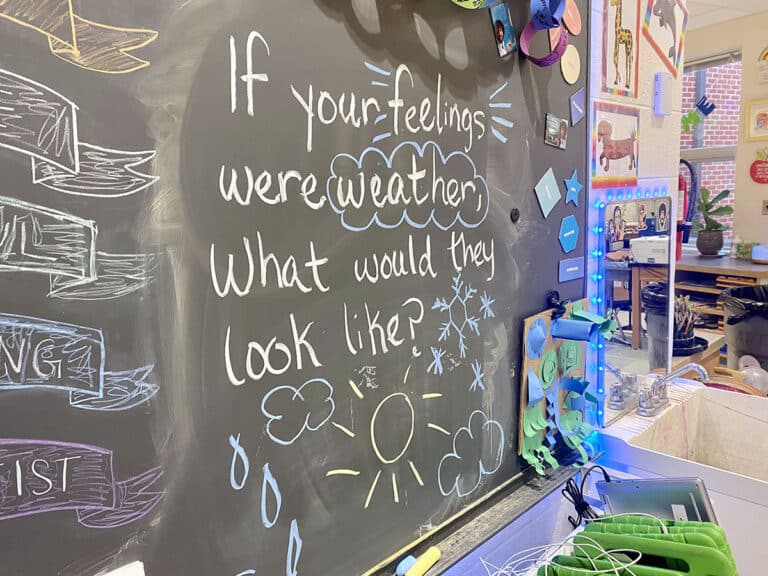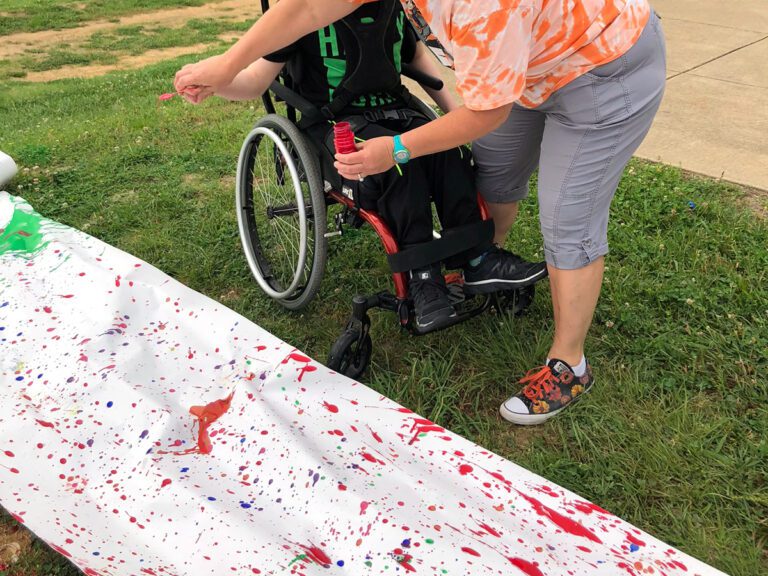A choice board is a graphic organizer that allows students to choose different ways to learn about a particular concept. Choice boards are set up in a grid, generally with 9 squares. You can include more or fewer activities, but I’ve found 9 to be a good number.
In addition, you can require that students complete items from the choice board in a specific way, such as choosing three choices in a row, or you can let students choose at random. The level of difficulty of the activities can vary or stay consistent.
A Choice Board Example
I created the art history choice board below as an early finisher activity for my art students. If a student finishes a project before the class is ready to move on, they must choose an activity from the board. The activities on this choice board all have a similar level of difficulty.
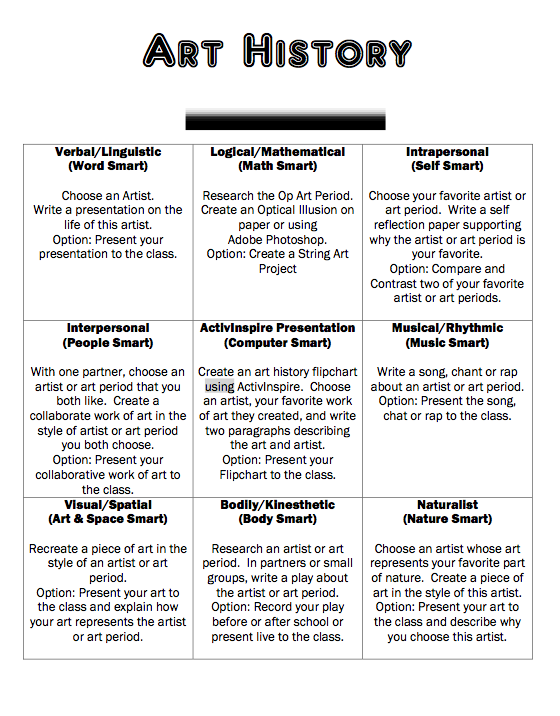
In addition, there is another choice board included in the amazing set of downloads found in the Methods for Early Finishers PRO Learning Pack! The Learning Pack is designed to help you support your early finishers through choice and differentiation. Choice boards are just the beginning!
Creating Your Own Choice Board
If you want to create a choice board for your classroom, keep these 4 things in mind:
- Each choice board should revolve around a single concept or learning expectation.
- Each square should contain an activity that is related to one of the multiple intelligences so that all students can find something that fits how they learn best.
- If you want students to complete multiple activities on the choice board, have them complete three activities in a row. Be sure to put the most fun activity in the center!
- The majority of the activities should be able to be completed individually. The exception would be the interpersonal square.
Personally, I keep the choice board attached to a bulletin board at the back of the classroom. There is also a folder with detailed instructions for each activity on the bulletin board so that students can work independently. Although the sample in this article was created for middle schoolers, you could certainly adapt it for older or younger students!
Have you ever used a choice board in your art classroom?
If you created a choice board for your classroom, what concept or topic would you choose?
Magazine articles and podcasts are opinions of professional education contributors and do not necessarily represent the position of the Art of Education University (AOEU) or its academic offerings. Contributors use terms in the way they are most often talked about in the scope of their educational experiences.

